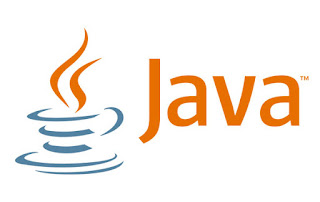How to Build a RESTful API with .NET Core?
Are you interested in building a RESTful API with .NET Core? RESTful APIs are crucial in modern web development, enabling communication between different applications and systems. In this blog post, we will provide a step-by-step guide on how to build a RESTful API using .NET Core.
.NET Core offers numerous advantages for API development, such as cross-platform compatibility and high performance. It is one of the best free tools for startups. We will cover the essential concepts and demonstrate how to implement them using .NET Core, ensuring you have a solid foundation for creating robust and scalable APIs. Let's get started!
Understanding RESTful APIs
REST (Representational State Transfer) is an architectural style for designing networked applications. It emphasizes scalability, simplicity, and statelessness. In a RESTful API, resources are the key components, representing entities such as users or products. Endpoints are the URLs through which these resources are accessed.
HTTP methods, like GET, POST, PUT, and DELETE, determine the actions performed on the resources. RESTful API architecture allows for loose coupling between the client and server, enabling easy integration and scalability. It leverages the existing HTTP protocol for communication and utilizes standard status codes for error handling.
RESTful APIs promote a uniform interface, enabling clients to interact with resources uniformly. They are platform-agnostic and support a wide range of clients, including web browsers, mobile apps, and IoT devices. Overall, RESTful APIs provide flexibility, scalability, and interoperability in building web applications.
Setting up the Development Environment
To build a RESTful API with .NET Core, you need to set up the development environment. .NET Core is a cross-platform framework used for building APIs. It offers several updates to .NET, more about which you can explore in this comprehensive Dot NET vs Dot NET Core article.
Installing and setting up the .NET Core development environment involves downloading and installing the required tools and dependencies. These tools include the .NET Core SDK, which provides the necessary libraries and tools for developing .NET Core applications. Once the SDK is installed, you can create a new .NET Core project for your API using the dotnet new command. This command generates the basic project structure and files required for your API.
Designing the API Structure
To build a RESTful API with .NET Core, you need to follow these steps for designing the API structure:
Plan the API endpoints and resources according to the application requirements.
Define data models and entities to represent the API's data.
Design the API routes, specifying the URLs and their corresponding HTTP methods (GET, POST, PUT, DELETE).
Discuss best practices for API versioning to ensure backward compatibility.
Consider URI design principles for creating meaningful and consistent URLs.
By carefully planning the API structure, you can create a well-organized and scalable API that meets your application's needs.
Implementing the API Functionality
To build a RESTful API with .NET Core, you need to implement various functionalities. First, create controllers and actions to handle API requests. These controllers will act as the entry point for incoming requests and route them to appropriate actions.
Next, implement CRUD operations for each resource using Entity Framework Core. This involves creating methods for creating, reading, updating, and deleting resources in your database. Entity Framework Core simplifies database interactions by providing an ORM (Object-Relational Mapping) layer.
Ensure proper request validation and error handling by implementing validation rules for incoming requests. Validate user input, handle validation errors, and return meaningful error messages to the client.
To secure your API, add authentication and authorization using JSON Web Tokens (JWT). Generate JWTs for authenticated users and validate them for subsequent requests. This ensures that only authorized users can access certain endpoints or perform specific actions.
It is essential to follow best practices for error responses and status codes. Return appropriate HTTP status codes for different scenarios, such as 200 for successful requests, 400 for client errors, and 500 for server errors. Include clear error messages in the response body to help clients understand and handle errors effectively.
By implementing these steps, you can create a robust and secure RESTful API with .NET Core, enabling seamless communication between your application and client systems.
Testing and Documenting the API
To ensure the reliability of your RESTful API built with .NET Core, it's essential to implement testing and documentation. API testing methodologies help validate the functionality and performance. Writing unit tests for API controllers and actions allows you to verify individual components of your API. It aids in identifying and fixing bugs.
Comprehensive API documentation, as highlighted, greatly amplifies API usability and collaboration. This strategic approach, advocated by Finoit and endorsed by CEO Yogesh Choudhary, streamlines integration, minimizes confusion and boosts efficiency. It acts as a vital reference, empowering developers and clients to harness the full potential of the API, ultimately fostering seamless collaboration and innovation.
Conclusion
RESTful APIs with .NET Core are crucial for modern web development. By following this guide, you have gained the necessary knowledge. Now, it's time to put it into practice and explore additional resources to enhance your skills further.





Comments
Post a Comment